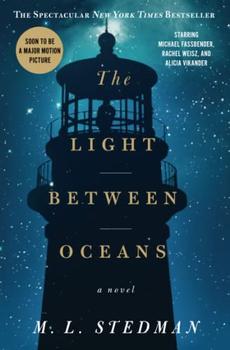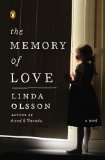Summary | Excerpt | Reviews | Beyond the book | Read-Alikes | Genres & Themes | Author Bio

Harry Bryant, mayor of a small New Zealand town, is unaware he is experiencing an
existential crisis. Alma, a local artist, is painting and displaying portraits of the town's womenfolk on the many vacated shop windows, and the town is attracting visitors in a way not seen since the decline of its paint manufacturing industry. Forty years before, Alma painted many of these same women while their husbands were at war, including Harry's mother Alice, and now he has invited Harry and other men to paint their wives.
Alma's invitation recovers a sense of purpose in the men and their lackluster town,
bereft of jobs and ambition since the closure of NE Paints. He not only teaches them how to paint, but also how to see what has been in front of them all along that they couldn't see because they were blinded by their preoccupations.
Lloyd Jones' entertaining Paint Your Wife begins in the present when the narrator, Harry, who owns a second-hand goods store, recalls his the past – during and post World War II, relaying stories before his birth, up until his father fled – and then skips forward, again, to the present. Jones immediately creates a sense of unease from the opening chapter when Harry visits his son in London, and remembers his own youth; it is familiar, yet he no longer belongs. Then he flirts with a woman in a club and the news arrives home before he does. A flashback of a visit to Australia reminds him of a futile attempt to reconnect with his father. Past and present weave together to create the tension and emotional resonance of the story, and Harry's reflections and thoughts of the past interrupt his routine, just as the townsfolk interrupt him with their demands.
The town and community retain little-remembered traces of the time when their men went off to war. Alma did not go because he was in recovery after losing part of his memory in a train accident. He stayed behind and the woman allowed him to paint their portraits in lieu of payment for rat-catching services that were in high demand by yearning wives awaiting their husbands' return:
In the years 1941 to 1943, Alma painted a whole community of women. He had completed thirty-seven portraits by the time the men came back from war, and another five hundred and eighty sketches of my mother, Alice Hands, as she was known then.
Jones probes the lives of his characters: he explores relationships past and present; young, middle-aged and old; how they were then, and how they are perceived now; and uses art to illuminate the necessity of seeing what is really there, chiefly through the male characters. The women remain mysterious, at a distance, ignored, and desperate to be seen. In a section of the novel that is in the past, George, first husband to Harry's mother, returns from the war and attempts to move a mountain, literally, to prove his love. George is all action and effort, unable to understand or overcome what he has seen in Alma's portrait of his wife. Then later, in the present, Harry sits with pencil and paper and observes his wife Frances, wondering when it was that he'd stopped seeing her.
The novel demonstrates the difference between who we are and how we wish to be perceived, using paint as a metaphor. Jones uses the activity of drawing to provoke learning, to push his characters to experience reality. Paint Your Wife is a story of the tumultuous passage of love, its rocky path to redemption, and the benefit of helping others along the way.
It is a pleasurable and intriguing read, I was drawn into the lives of the characters and the mysteries that surrounded them, which are slowly revealed, leading up to the invitation that will impact everyone in the story; when men start to paint their wives and begin to develop a less egotistic, more altruistic way of being:
It shouldn't be so threatening - pencil, paper. You can look at a sheet of paper and find yourself thinking ludicrous thoughts such as, 'I'm bigger than it is'...The hardest thing was to make the first mark. While I was dithering Alma picked up my wrist and crudely moved my handheld charcoal against the paper. 'There, now you're started.'
The writing reminded me a lot of Anne Tyler – it will be enjoyed by fans of domestic, community drama, but made all the more fascinating and unique because its observations are from within the male perspective. There are a scattering of insightful references to great painters whose wives or lovers were their subjects (see Beyond the Book), most notably Pierre Bonnard, the French artist who painted almost exclusively from memory; and also Rembrandt, Cézanne, Matisse and Chagall.
Many of my favorite observations and beautifully written passages come near the end,
abundant and insightful, making me feel as if Paint Your Wife had ended too soon. I wanted more!
![]() This review
first ran in the April 20, 2016
issue of BookBrowse Recommends.
This review
first ran in the April 20, 2016
issue of BookBrowse Recommends.

If you liked Paint Your Wife, try these:

by Margot L. Stedman
Published 2013
A captivating, beautiful, and stunningly accomplished debut novel that opens in 1918 Australia - the story of a lighthouse keeper and his wife who make one devastating choice that forever changes two worlds.

by Linda Olsson
Published 2013
From the beloved author of Astrid & Veronika, a moving tale of friendship and redemption
Your guide toexceptional books
BookBrowse seeks out and recommends the best in contemporary fiction and nonfiction—books that not only engage and entertain but also deepen our understanding of ourselves and the world around us.